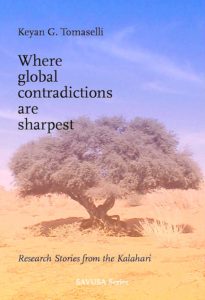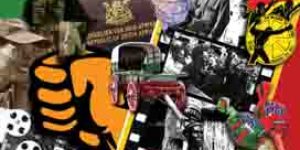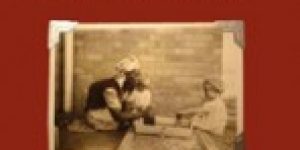Where Global Contradictions Are Sharpest ~ Acknowledgements, Acronyms, A Note On Pronunciation
No Comments yet Acknowledgements
Acknowledgements
The research on which this book reports is greatly indebted to The Protea Hotel, Upington, for sponsorship of accommodation on the way to and back from the Kalahari. Riann and Jeannne de Klerk, Bill and Kathy Fisher, and Kathleen and Willie Burger provided other accommodations in Upington at one time or another. Thanks to the Molopo Lodge for dealing with our often-idiosyncratic requests, like students having to study and write exams during fieldtrips.
To Bronwyn Spicer, who worked as my editorial assistant on this book, my abiding and enduring appreciation. Thanks to Kamini Moodley, the project’s research manager, who worked hard and diligently behind the scenes, and also assisted with copyediting. In field trip and research management Kamini was preceded by Vanessa McLennan-Dodd, and Chantel Oosthuysen. My thanks also to Catherine Dunphy for copyediting. Nelia Oets was a superb camp provider, translator and co-researcher. Nelia was always ready to volunteer her 4X4 for our visits to the Kalahari and assisted in many other roles. Our research team could not have accomplished as much as it did without her consistent and systematic support – both in material resources and intellectually. Thanks to all my students and research affiliates who contributed to the project over the ten-year study period. All have been an inspiration to me and have provided significant depth to the analysis. (A second strand of this project has been conducted in Zululand, not reported on here.) Contributors are listed in Table 1 in Chapter 2 together with the their publications and thesis titles. A special mention must go to Mary Lange who acted as facilitator, translator, and advisor and who brought a unique empathy to our research relations with our hosts. Arnold Shepperson was an ever-present intellectual source in both this and other of our publications on the topic. Thanks to all our partners in the Kalahari, Belinda Kruiper, Roger Carter and all those who engaged in discussion with us. Paul Rodda provided computer support.
The research was partly funded by the University of Natal’s Research Fund, now the University of KwaZulu-Natal. The National Research Foundation also funded it: Social Sciences and Humanities. Opinions expressed and conclusions arrived at are those of the author and not the Foundation. An UKZN-based Mellon Post-doctoral Fellowship enabled Matthew Durington to join the project for 18 months. His critique of an earlier draft of Chapter 2 proved very helpful. The research was started while I was a Fulbright researcher in the African Studies Center, Michigan State University, 1990-1, working on its African Media Program.
Other organisations which facilitated aspects of our research at one time or another include the Department of Anthropology, Smithsonian Institution; Documentary Educational Resources; the Working Indigenous Minorities Group; the South African San Institute; the Nquaa Khobee Zeya Trust, the Kuru Development Trust; and Rob Waldron.
I must also mention Jake Homiak whose early support via the Smithsonian’s Human Studies Film Archives underpinned the early stages of the research. Others on whom my students and I have drawn include John and Lorna Marshall, Cynthia Close, Fiona Archer, Nigel Crawhall, Meryl-Joy Winschutt, amongst many others. I am also deeply appreciative of the sustained support and encouragement for our autoethnographic turn offered by Norman Denzin of the University of Illinois, Urbana-Champaign. Thanks also to Frans Prins, Bob Hitchcock, Garth Allen, Megan Biesele, Dave Wiley, amongst many others, who have liaised with me and some of my students on our work.
Chapter 1, ‘Negotiating Research with First Peoples’, is revised, adapted and updated from Shepperson, A. and Tomaselli, K.G. (Eds) (2003), ‘From one to an-other: Auto-ethnographic explorations in Southern Africa’, Cultural Studies – Critical Methodologies, 4(4). Chapter 2 is a very extensively updated, totally revised and much elaborated version of my earlier article, ‘Blue is hot, red is cold: Doing reverse cultural studies in Africa’, first published in Cultural Studies – Critical Methodologies, 1(3), 2001. Chapter 3, ‘Dit is die Here se Asem: The Wind and its Messages’ is adapted from Cultural Studies – Critical Methodologies, 3(4), 2003. Chapter 4, ‘“Op die Grond”: Writing in the San/d, Surviving Crime’, is revised from Current Writing: Text and Reception in Southern Africa, 15(3), 2003. Chapter 5, ‘Psychospiritual Ecoscience: The Ju/’hoansi and Cultural Tourism’, and Chapter 6, ‘Textualising the San “Past”: Dancing with Development’, are revised from Visual Anthropology, 12(3/4), 1999. Chapter 7, ‘Stories to Tell, Stories to Sell: Resisting Textualisation’, is adapted, revised and updated from Cultural Studies, 17(6), 2003. My thanks to the various publishers for permission to rework these articles into this book.
Keyan G. Tomaselli, August 2005
Acronyms
- CCMS Culture, Communication and Media Studies (University of KwaZulu-Natal) (Howard College Campus, Durban)
- CKGR Central Kalahari Game Reserve
- IGWIA International Working Group for Indigenous Affairs
- CPA Community Property Association (Based in Andriesvale)
- CRAM Cultural Resources Auditing and Management Project
- JFP Jesus Film Project (Based in Kimberly)
- LIFE Living in a Finite Environment Program
- NNDFN Nyae Nyae Development Foundation of Namibia (Based in Windhoek)
- NNFC Nyae Nyae Farmers’ Cooperative (Based in Baraka)
- SABC South African Broadcasting Corporation
- SASI South African San Institute (Based in Kimberley)
- SBB Safaris Botswana Bound (Based in Maun, operating in KD/1 Area)
- SI Survival International
- SIM Serving in Mission
- SACOD Southern African Communications for Development
- SWAA South West African Administration
- SWAPO South West African People’s Organisation
- WIMSA Working Group for Indigenous Minorities in Southern Africa (Based in Windhoek, Namibia)
A Note on Pronunciation
All !Kung and San languages have clicks, which are additional consonants. The most commonly used clicks are:
≠ Alveolar click made by sucking the tongue against the ridge behind the upper front teeth.
// Lateral click made at the side of the mouth.
! Palatal click made by clicking the tongue on the roof of the palate.
For further information on language see Dickens and Traill (1997); Dickens (1992); Barnard (1992: xix-xxii).
You May Also Like
Comments
Leave a Reply




